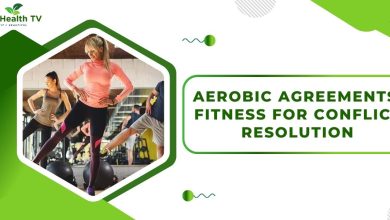The Respiratory System and Oxygen Supply During Physical Activity
Breathe Freely: Unraveling the Respiratory System and Oxygen Transport in Physical Activity
Respiratory System and Oxygen Supply During Physical Activity
Respiratory System & Oxygen Supply: Physical activity is an essential component of a healthy lifestyle, offering numerous benefits for overall well-being. But have you ever wondered how your body ensures an adequate supply of oxygen during exercise? The complex operations of the respiratory system hold the key to the solution. In this blog post, we’ll explore the remarkable journey of oxygen through the respiratory system, from inhalation to utilization, and understand how it supports your physical endeavors.
The Respiratory System: A Lifesaving Mechanism
The respiratory system consists of several vital components, each playing a unique role in the exchange of oxygen and carbon dioxide:
-
Nose and Mouth:
- Inhalation begins when air enters through the nose or mouth. Here, the air is filtered, humidified, and warmed before proceeding further.
-
Pharynx and Larynx:
- The pharynx and larynx help route air into the trachea while preventing food and liquids from entering the airways.
-
Trachea and Bronchial Tubes:
- The trachea (windpipe) splits into bronchial tubes that lead to the lungs. These tubes are lined with tiny hair-like structures called cilia that sweep away foreign particles.
-
Lungs:
- The lungs are the primary organs responsible for gas exchange. They contain millions of tiny air sacs called alveoli, where oxygen is absorbed into the bloodstream, and carbon dioxide is released for exhalation.
Oxygen Transport: The Hemoglobin Connection
-
Hemoglobin’s Role:
- Oxygen molecules bind to a protein called hemoglobin in red blood cells. This binding forms oxyhemoglobin, which transports oxygen from the lungs to body tissues.
-
Muscle Oxygenation:
- During physical activity, muscles require more oxygen to support increased energy demands. Blood flow to working muscles increases, delivering oxygen for energy production.
Breathing Patterns During Exercise
-
Increased Respiratory Rate:
- Physical activity prompts an increase in your breathing rate (respiratory rate) to accommodate the heightened oxygen demand.
-
Deeper Breaths:
- Deeper inhalations (tidal volume) allow for a greater exchange of gases in the lungs, maximizing oxygen uptake.
Training the Respiratory System
-
Aerobic Exercise:
- Engaging in regular aerobic exercise improves the efficiency of your respiratory system, making oxygen delivery more effective.
-
Breathing Techniques:
- Practices like diaphragmatic breathing and controlled exhalation can enhance your lung capacity and oxygen utilization.
Conclusion
The respiratory system is a marvel of biological engineering, ensuring that your body receives a continuous supply of oxygen, especially during physical activity. As you engage in exercise, your respiratory system adapts to meet increased oxygen demands, supporting muscle function and overall performance. Understanding the symbiotic relationship between physical activity and the respiratory system empowers you to make informed choices for a healthier, more active lifestyle. So, the next time you take a deep breath during exercise, remember the intricate journey of oxygen that fuels your body’s vitality.





